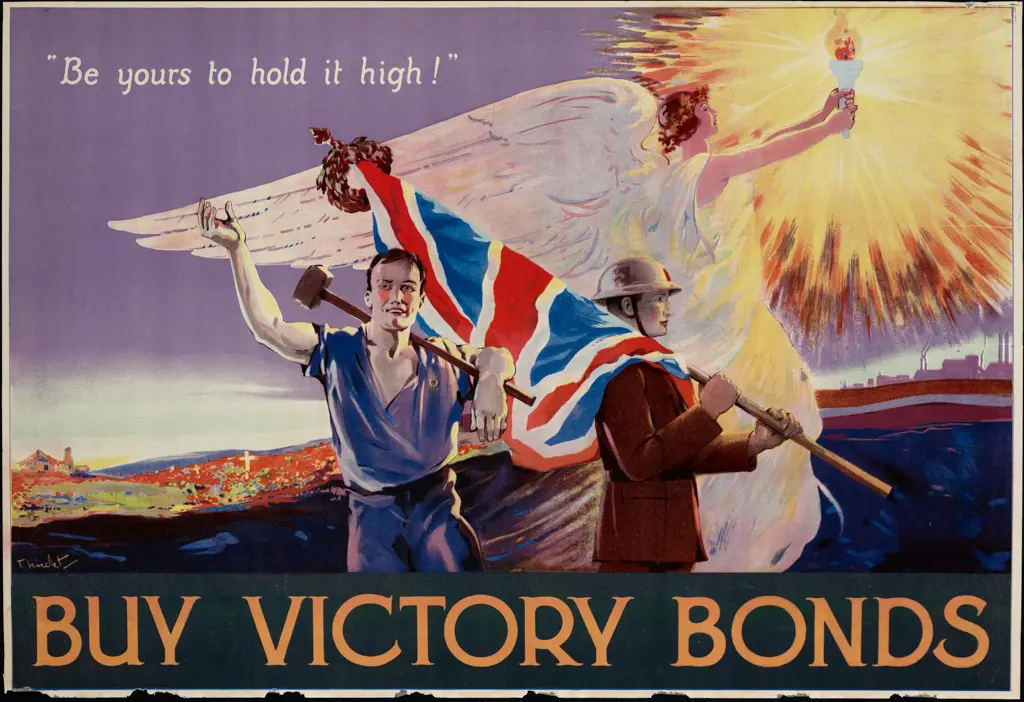
Victory Bonds
The Canadian Government sold Victory Bonds to help pay for the war. Here you can explore some of the different posters created to advertise them. Plus, learn about the special flag designed to recognize high contributing communities.
The Canadian Government sold Victory Bonds to Canadian citizens, private corporations and various organizations in order to raise funds to pay for the war.
A popular financial product
The bonds were a loan to the government that could be redeemed with interest after 5, 10 or 20 years and were released during 5 different campaigns between 1915 and 1919. In 1915 a hundred million dollars worth of Victory Bonds was issued and quickly purchased.
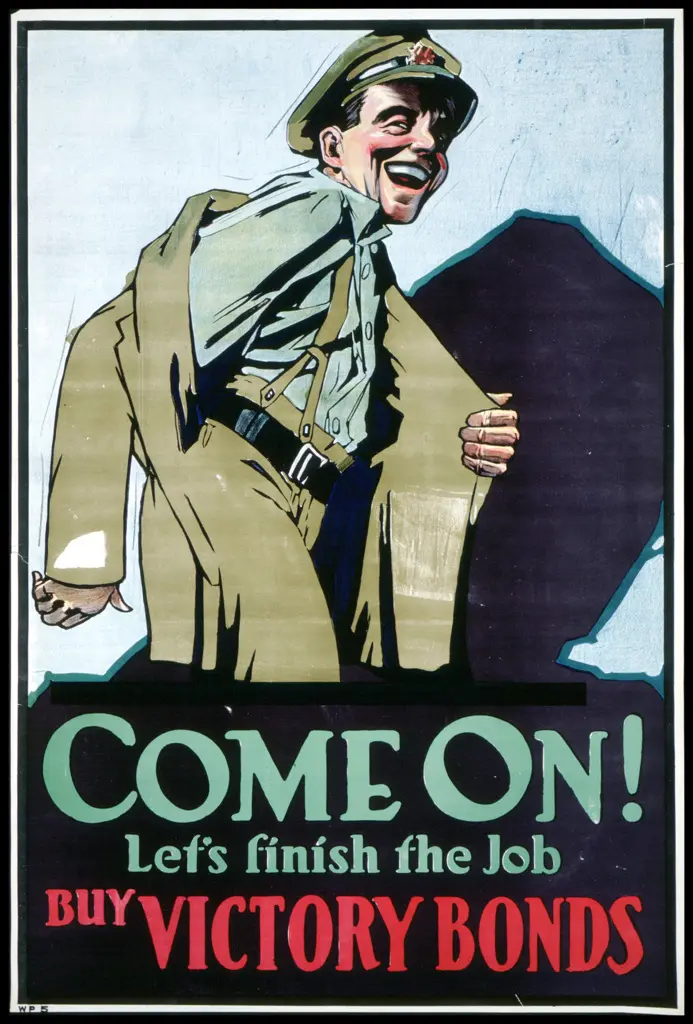
Give your life savings for the security of your country
“The man, be rich or poor, is little to be envied, who at this supreme moment fails to bring forward his life savings for the security of his country.”
Slogan on the application for a Victory Bond during the 1917 Victory Loan campaign.

Each Victory Bond release saw a supporting poster campaign overseen by the Victory Loan Dominion Publicity Committee. The posters were large and printed in vivid colour on poor quality paper, often in substantial numbers.
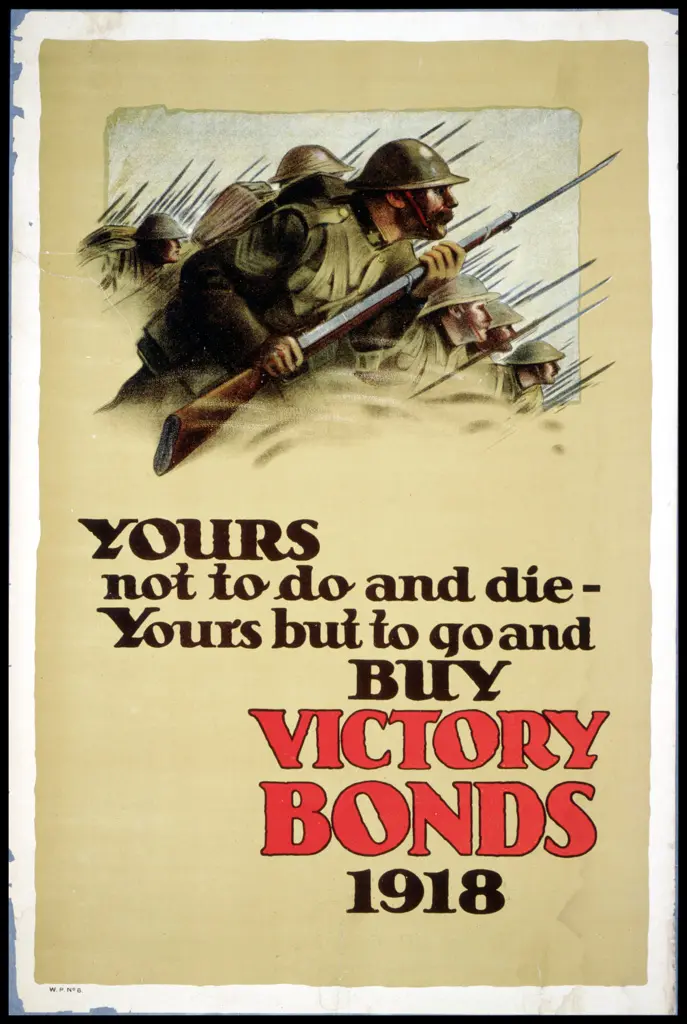
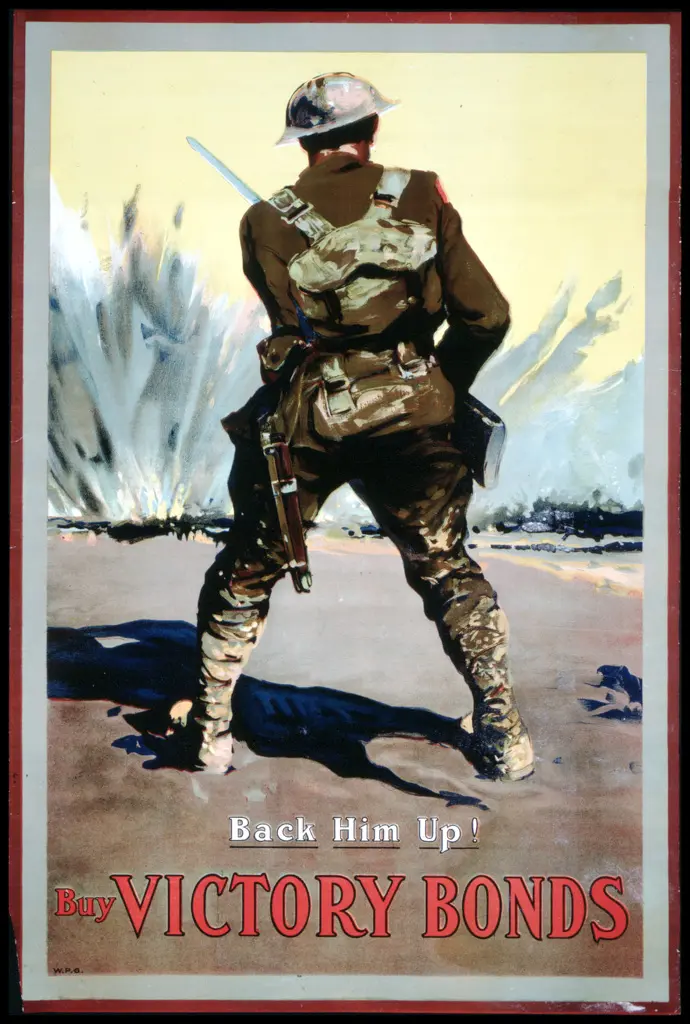
Victory Bonds Will Help Stop This
This poster had a print run of approximately 60,000. It portrays the sinking of the Llandovery Castle, an unarmed hospital ship that was torpedoed on June 27, 1918. Two hundred and thirty-four lives were lost.
Of those killed on the Llandovery Castle were fourteen Canadian nurses. Over 3,000 of Canada’s Nursing Sisters volunteered at the start of the war. They worked in hospitals and other institutions across Europe and often close to the front lines. Sixty-one nurses died during the war, primarily from sickness.
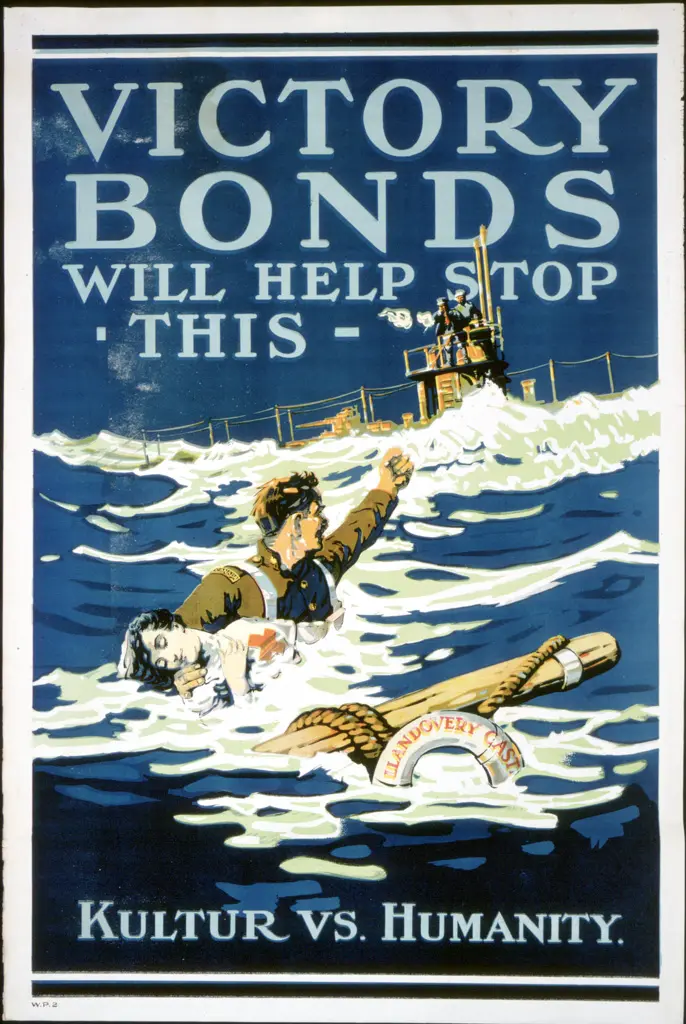
Canadian Expeditionary Force Photographs
To document the activities of the Canadian forces the Canadian Expeditionary Force sent their own photographers to Europe to record the events. Some of the images they created served as the basis or inspiration for future posters.
To see more photographic images of the Canadian Expeditionary Force visit the Canadian Expeditionary Force photograph albums (C 224-8) on Wikimedia Commons.
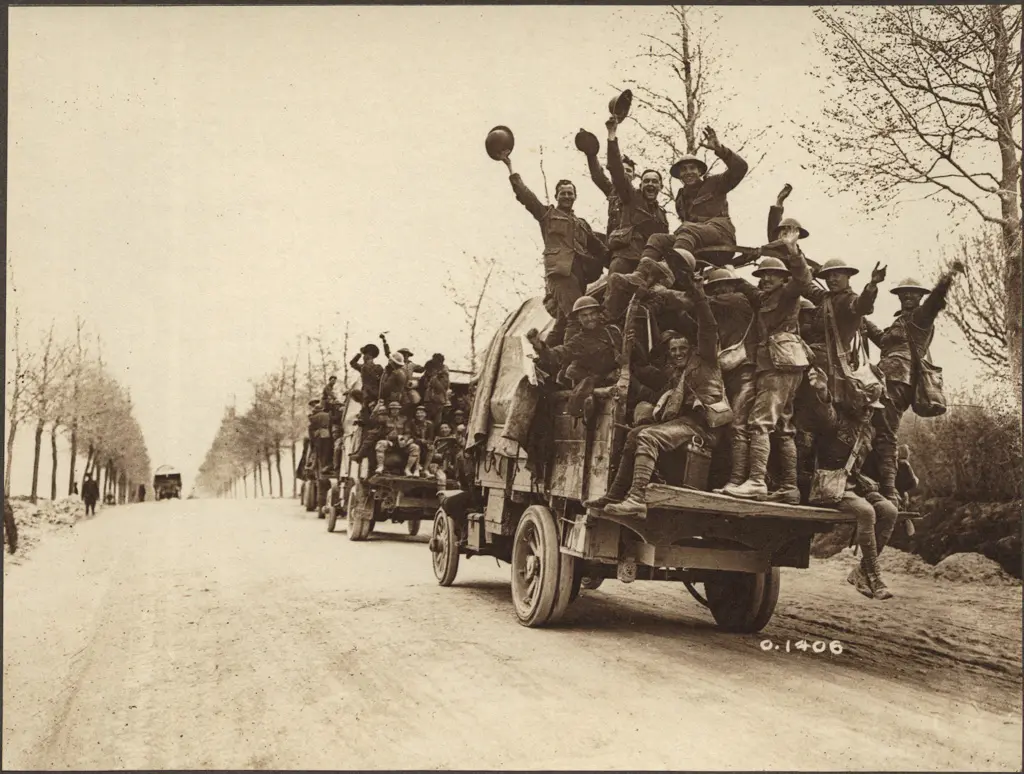
Let’s all do our part
Posters constantly urged everyone to purchase bonds. Women in the home put money aside from their housekeeping allowance and children were encouraged to collect Thrift Stamps that could be accumulated until enough had been saved to buy a Victory Bond.
Bring Our Boys Back
The Victory Bond campaign of 1918 was one of the most successful, raising over $600,000 in three weeks. Although hostilities ended on November 11, 1918, another campaign was launched in 1919 that focused on the theme “Bring Our Boys Back” and the need to raise funds for the rehabilitation of returning soldiers.
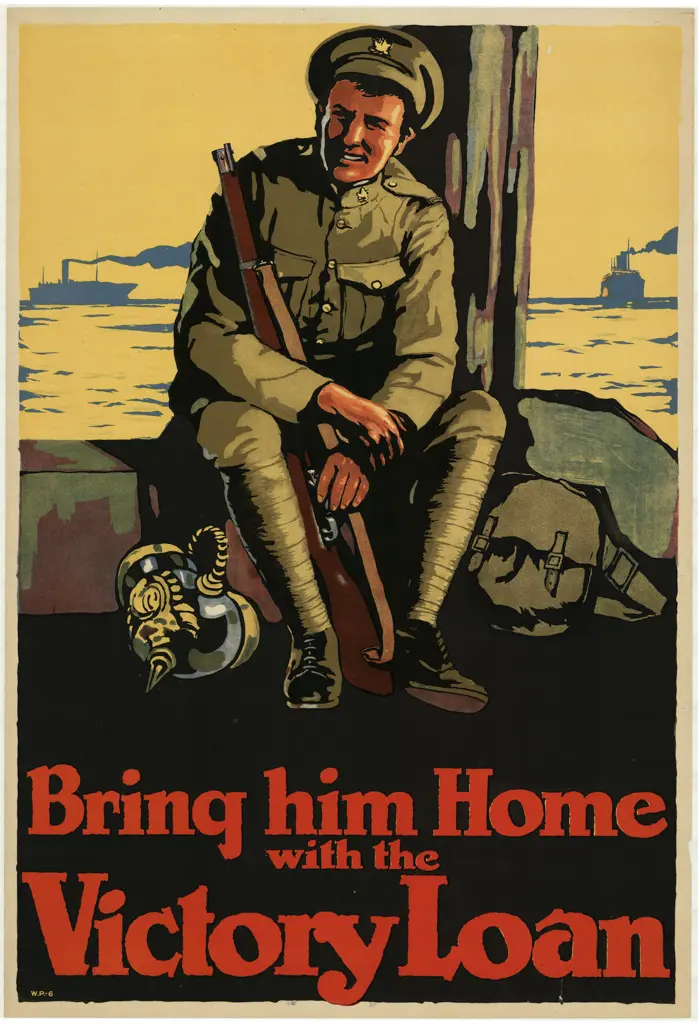
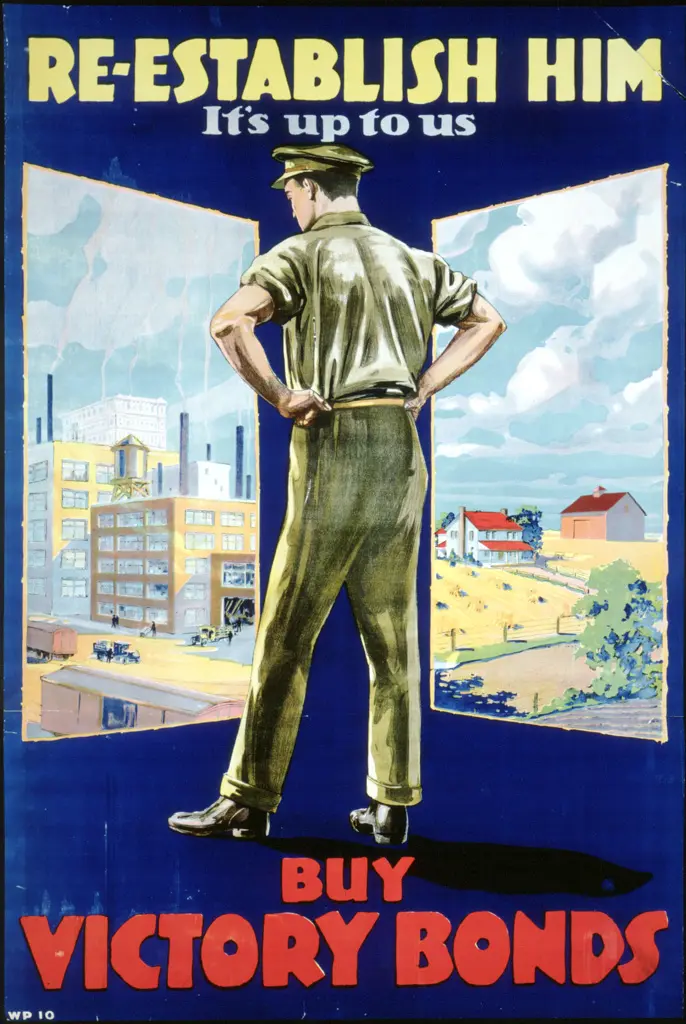
Victory Loan Flags
Flags were designed to reward those communities that made significant contributions to the Victory Bond campaigns. The population of a city, town or district must have purchased a certain value in Victory Bonds and upon reaching that target the citizens were rewarded with the presentation of a Victory Loan Honour Flag.
In 1919 a new flag was commissioned for that year’s campaign, incorporating the heraldic arms of the Prince of Wales, the future Edward the VIII, into the flag’s design. The prince visited Canada in September 1919 and raised the flag at Parliament on Labour Day weekend.
The prince’s remark, “I hope every City and District will win my flag,” became part of the poster campaign as seen in the image to the right.
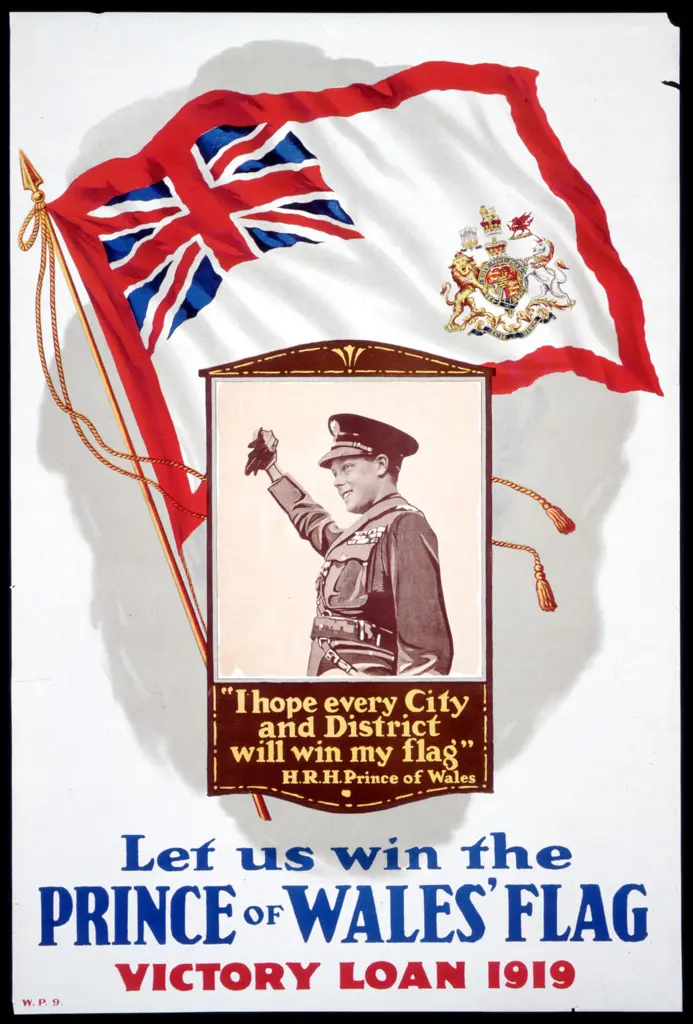
The War Poster Service
In 1916 the Canadian Government established the War Poster Service to produce posters in both English and French. French posters were often a mirror version of the English design, but some unique posters were created just for the French speaking population.
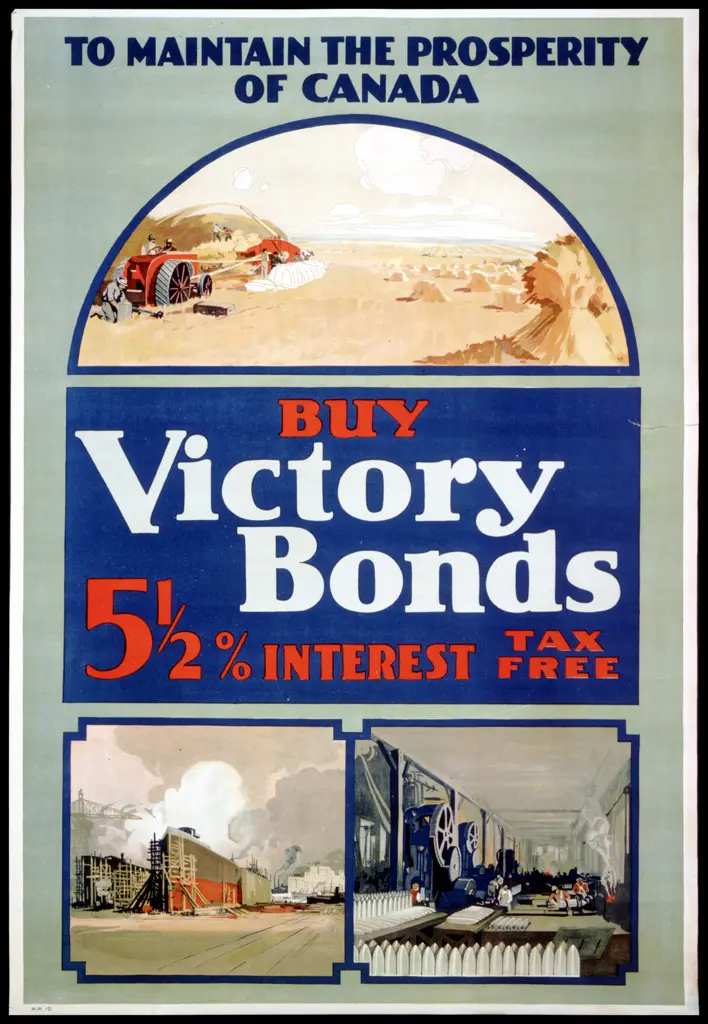
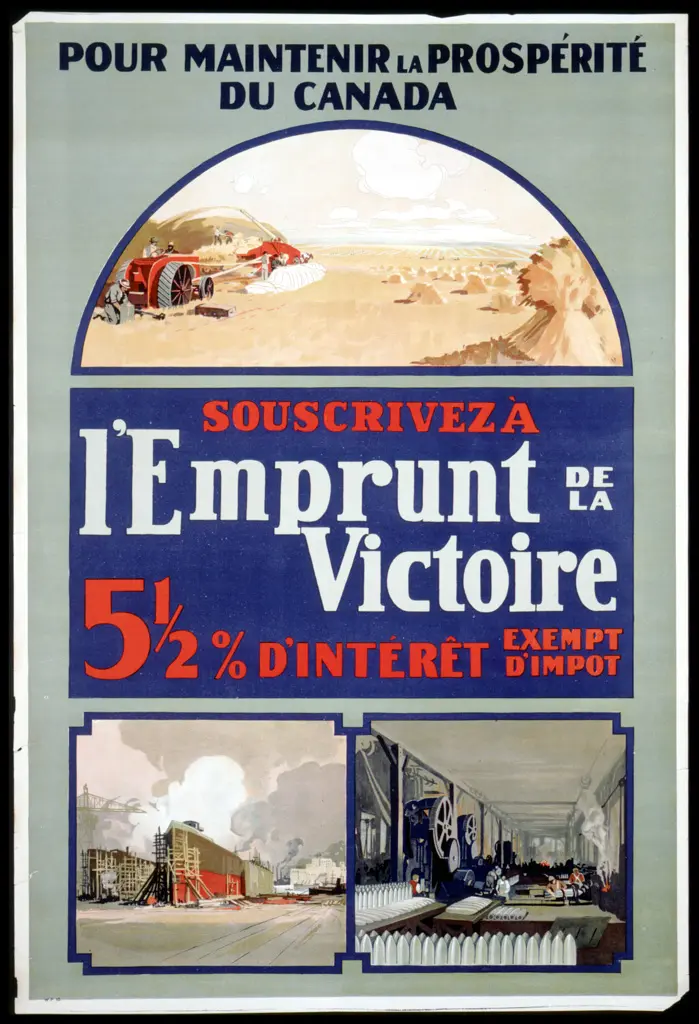
The legacy of Victory Bonds
The Victory Bond Campaign was reintroduced during the Second World War. In 1946, after WWII had ended, the government began issuing Canada Savings Bonds. This was meant to encourage Canadians to continue the savings habit they had established with Victory Bonds.
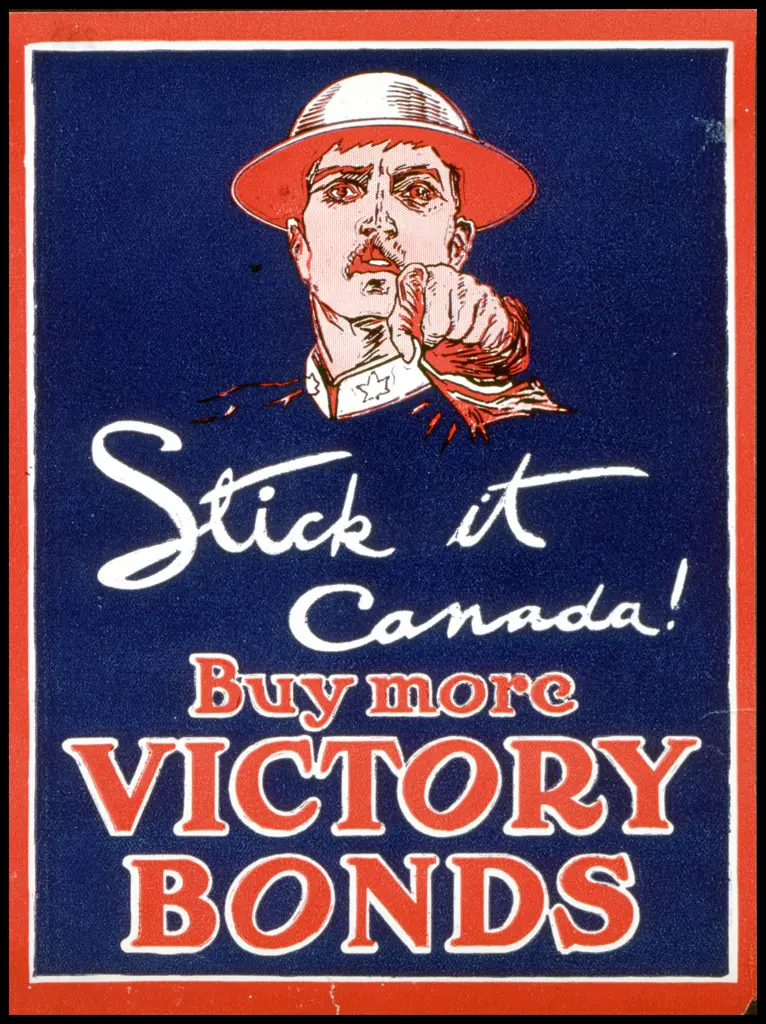
Back to: Chapter 01
Introduction
Next up: Chapter 03
The Canadian Patriotic Fund
Looking for more records?
Search our collection